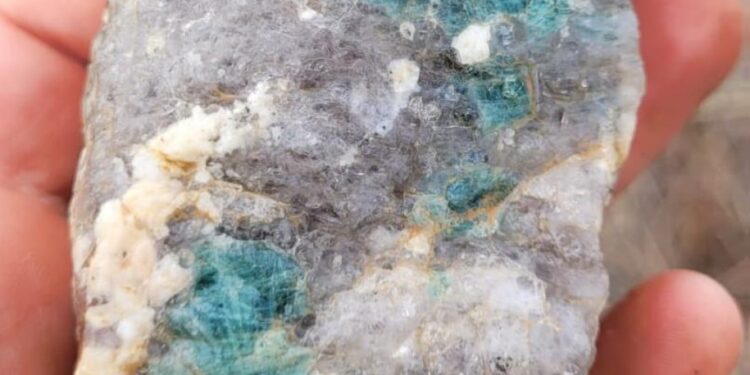Outcrops of pegmatite veins with large spodumene and apatite crystals have been identified at the Kalahari Prospect, part of Impact Minerals Limited’s (ASX:IPT) Hopetoun Project near the mining centre of Ravensthorpe in Western Australia.
“The recognition of outcrops of lithium-bearing minerals is an exciting development for Impact and its joint venture partners at Hopetoun,” Managing Director, Dr Mike Jones, said.
“Most of the previous work in the area has been focussed on the precious and base metal potential of the Albany Fraser belt given it the host to the Nova-Bollinger deposit.
“It is possible, however that the belt also may host significant lithium and rare earth deposits and we look forward to the assay results from our initial samples.
“In the meantime we will extend our soil geochemistry surveys over more of the project area to define areas for follow up work,” Dr Jones said.
The spodumene outcrops occur in a road base quarry in an area of generally poor outcrop about 500 metres to the east of the main Kalahari base and precious metal target (233,550 mE, 6,248,900 mN Zone51).
The veins, which are steeply dipping and trend north east, occur as a swarm in a zone about 30 to 50 metres wide with individual veins up to 25 cm thick.
The veins clearly cross cut and are younger than the surrounding gneisses (Munglinup Gneiss) which are part of the Albany Fraser Mobile Belt. As such they are different in age, and likely to have a different origin to, the classic Archaean-aged LCT pegmatites that form many of the deposits discovered in the older Yilgarn and Pilbara cratons.
The spodumene crystals are up to five cm in dimension and exhibit classic pink fluorescence under ultra violet light.
Some of the veins contain similar-sized crystals of aquamarine apatite, a phosphate mineral which has measurable levels of yttrium on a hand-held XRF instrument and which may be prospective for rare earth elements.
Grab samples of these veins have been submitted for geochemical assay with results expected by mid-May.
Drill Programme Update
The diamond drill programme to test the Top Knotch and Silverstar copper-silver-gold targets is nearing completion, with two shallow holes completed at Top Knotch and one in progress at Silverstar.
Disseminated copper minerals have been found in mafic rocks at Top Knotch but these are considered insufficient to explain the geochemical and geophysical anomalies.
Accordingly, a detailed soil geochemistry survey has been undertaken over the target are to better refine the target, which was identified from earlier reconnaissance work. Samples will be dispatched to Perth shortly for assay, with results expected in June.
For further information please visit: https://www.impactminerals.com.au/












